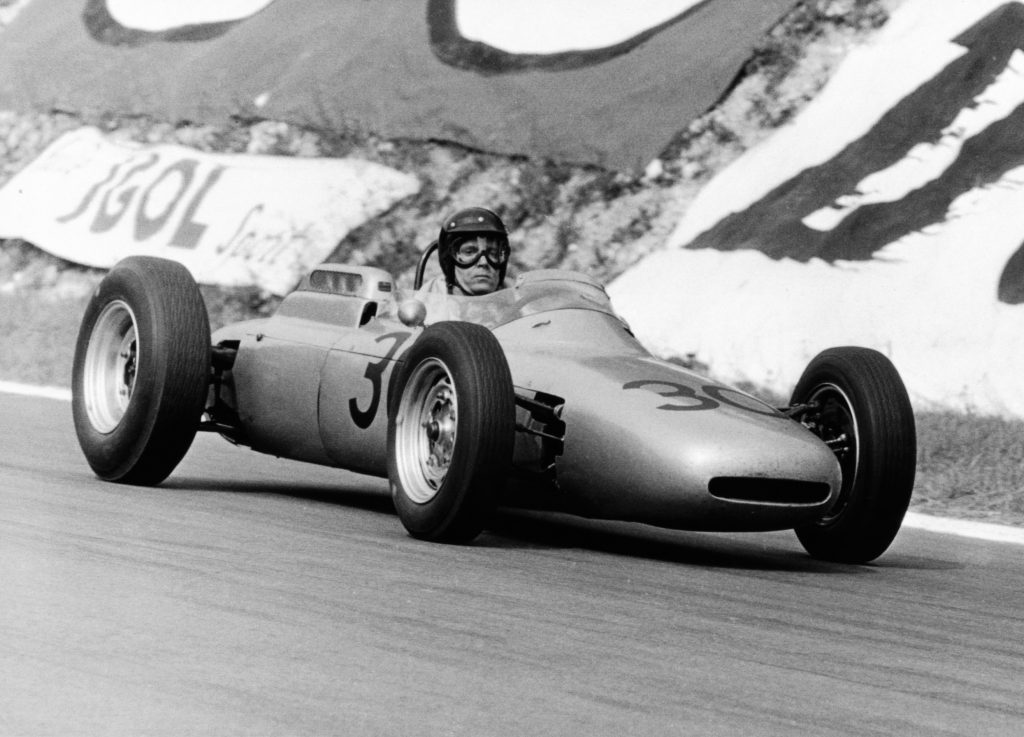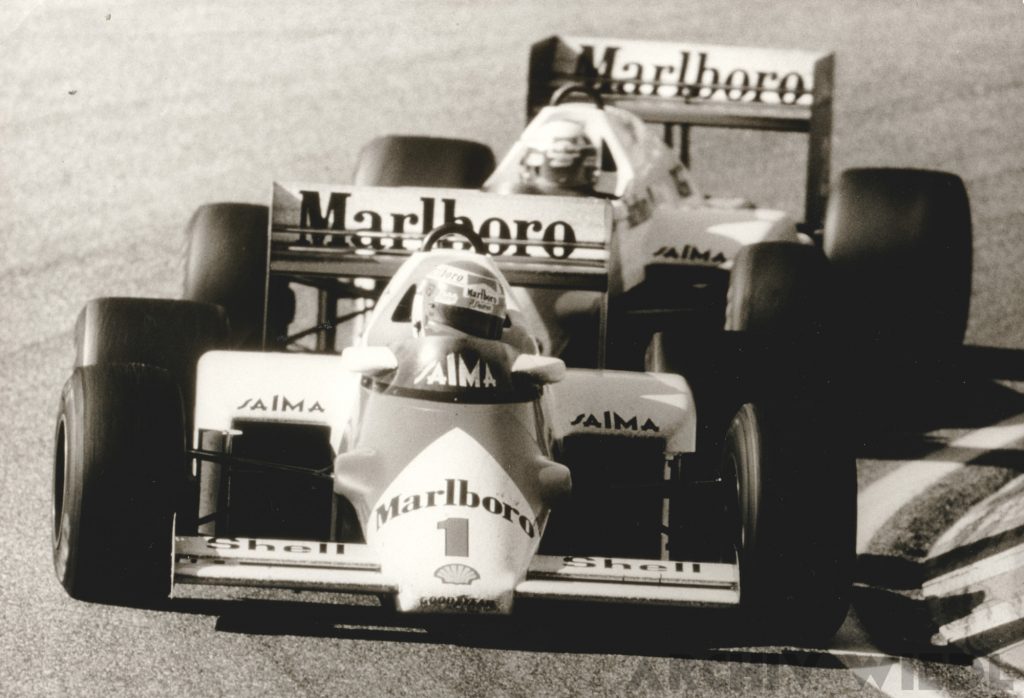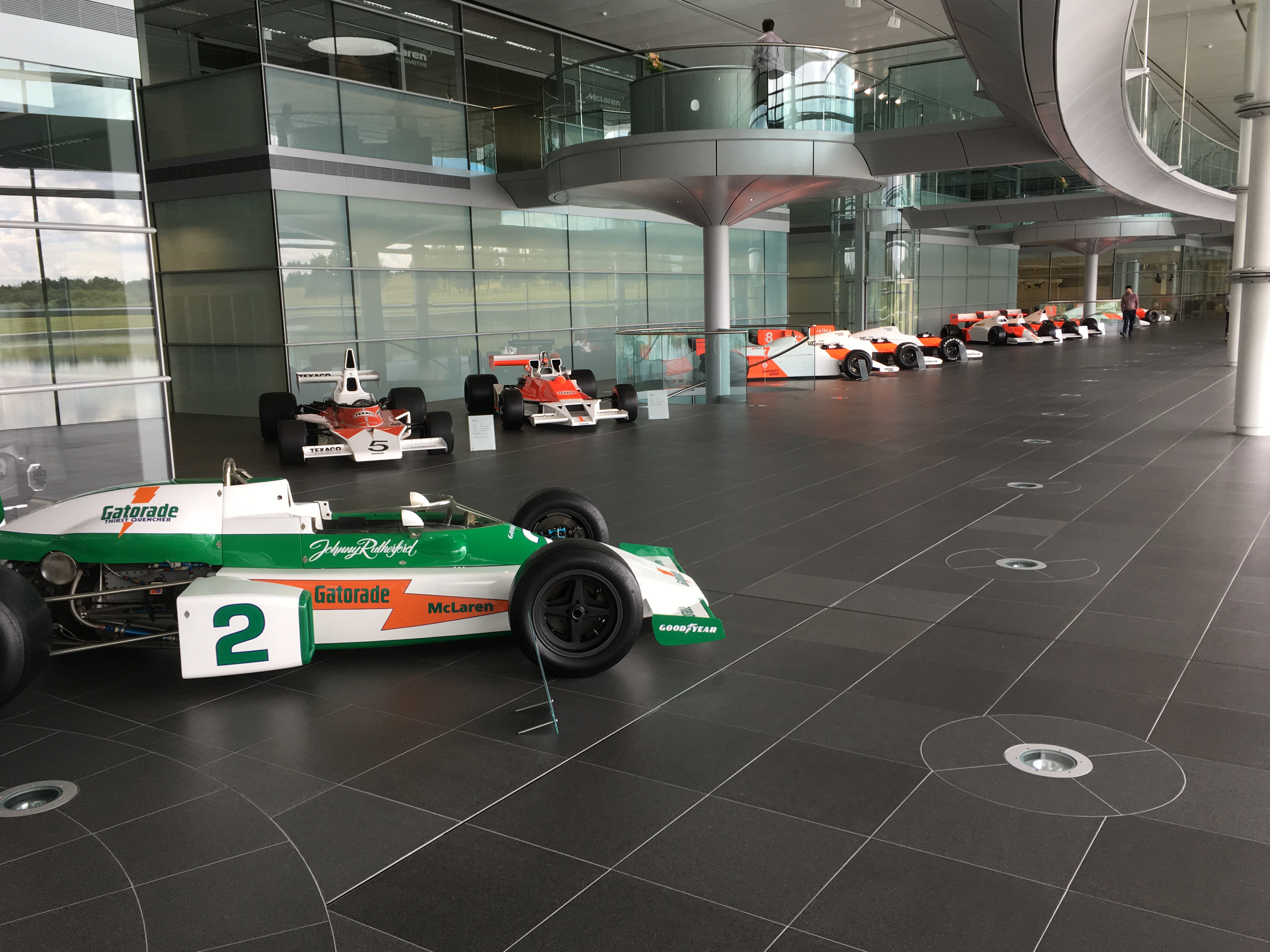Porsche in Formula 1: In the 1960s and 1980s, Porsche was able to win Grand Prix Races – but in the early 1990s even qualifying was difficult!

Porsche wanted to return to Formula 1 in 2026. But the planned marriage with Red Bull, whoseconclusion had long been an open secret, did not come to fruition. The bride left the groom seated. Because bride Red Bull decided to marry Ford. This relationship gives her more freedom. After all, unlike Porsche, Ford is not seeking a stake in the racing team. At the moment, it is unclear whether Porsche will compete in Formula 1 in 2026 or later. It would be a return. Dreimal, the Swabian car manufacturer was already active in the premier class. We look back on three very different appearances by Porsche in Formula 1.
Porsche took part in Formula 1 for the first time in the early 1960s. With this commitment, Porsche crowned its extensive motorsport commitment. Previously, the young carmaker won in the 1950s at the Carrera Panamericana as well as in numerous sports car races. At the time, Porsche regarded this as the ideal stage for advertising its production sports cars. After all, the winning vehicles essentially descended from the production models. At the same time, Porsche 1959 derived a monoposto from the Porsche 718 sports car in order to also compete in Formula 2.
When Formula 2 became Formula 1, there were new opportunities for Porsche!
With a displacement of 1.5 litres, the four-cylinder engine of the 718 fitted perfectly into Formula 2. Because at that time in Formula 1, which competed with up to 2.5 liters of displacement, often lacked starters, the organizers of the Grand Prix regularly filled the fields with Formula 2 cars. As a result, the Porsche 718 made its Grand Prix debut in Monza in 1960. Hans Herrmann even won a World Championship point in sixth place. It helped that the British teams boycotted the race in the royal park just outside Milan in protest against the banked corners.
For the season 1961, the sports commission CSI reacted to the shrinking fields of the premier class. The new Formula 1 was essentially based on the previous Formula 2 rules. The main difference was that pure racing engines were also permitted in the 1.5-liter Formula 1. In the junior class Formula 2, the engine block had to come from a production vehicle. Nevertheless, this step opened the door to Grand Prix racing for Porsche. Already at the season debut in Monaco, two Porsche 718s were on the grid under the entry of Porsche System Engineering.
Porsche built an air-cooled eight-cylinder engine with 1.5-liter displacement!
In the course of the season, Porsche switched from the 150 hp 718 to the new Porsche 787 with the Fuhrmann engine. Thanks to this engine, the Porsche drivers were able to face the competition with an output of around 190 hp. Star pilot of the Zuffenhausen team was Dan Gurney. The tall American finished second three times over the course of the season. At the end of the season, this was enough for fourth place in the World Championship standings. Gurney finished the season level on points with third-placed Stirling Moss. However, the two victories of the BritishLotus driver caused the pendulum to swing in Moss‘ favour in the annual standings.
In 1962, Porsche ignited the next stage of its monoposto range with the new Porsche 804. The 804 was equipped with an eight-cylinder engine developed by Hans Mezger. Dan Gurney won the French Grand Prix with the Porsche 804 in Rouen. Gurney benefited from the absence of the Ferrari as well as the failures of the favored Lotus and B.R.M. Nevertheless, Porsche withdrew from the premier class before the season finale in Kyalami. Because the car manufacturer was just about to buy the body shop Reutter. Forthis reason, the expensive Grand Prix programme was put to the test. With the withdrawal, those responsible wanted to save money in order to be able to buy Reutter.
Porsche’s comeback in Formula 1 came in 1984 as a supplier to TAG and McLaren!
In the following years, Porsche concentrated on endurance racing. In 1970, the Porsche 917 clinched its first Le Mans victory in Zuffenhausen. The Porsche 936 and 935 added further victorys at Le Mans to Porsche’s Vita. In addition, Porsche and Renault taught the turbo to run at Le Mans in the 1970s. From 1977, Renault also competed in the premier class with its turbos. But at Porsche, money was always tight. The motorsport department also had to play its part in the result. Today, this is called a profit center.

Nevertheless, those responsible in Zuffenhausen also followed the monoposto sport. Already at the end of the 1970s they started an Indianapolis project. They relied on a turbocharged boxer engine to advertise their sports cars in America. Even if the big hit did not succeed, the Indy 500 project once again underlined Porsche’s turbo competence. At the same time, the search for suitable turbo engines began in Formula 1. McLaren, a partner of Ford since the team’s inception, was looking for its own engine to gain an advantage over its competitors.
Porsche got an order from Techniques d’Avant Garde!
McLaren boss Ron Dennis convinced sponsor Techniques d’Avant Garde (TAG) to finance an engine that McLaren can use exclusively. McLaren was considering the option of a turbocharged six-cylinder in-line engine from Max Heidegger. But McLaren and TAG found a partner in Porsche in 1981 that offered a better solution. Hans Mezger began with the planning. The engineer, who had already been responsible for the eight-cylinder engine for Formula 1 at Porsche a good two decades earlier, initially thought about a boxer engine – in the manner of the house.
But McLaren chief designer John Barnard pushed for the narrowest possible engine. So, following the example of Renault and Ferrari, a water-cooled V6 Bi-Turbo with four valves per cylinder was created. In 1983, the new cement plant at Zandvoort made its debut in the premier class. McLaren entrusted the first use of the TAG turbo „made by Porsche“ to Niki Lauda. Even though the former world champion dropped out at the halfway point of the race, the fuse was burning. Porsche consistently analyzed the faults of the officially TAG TTE PO1 1.5 V6t engine and learned quickly.
Porsche had the right engine at the right time!
At its debut, the turbochargers from Kühnle, Kopp & Kausch (KKK) pressurized the V6 at 2.5 bar. The engine, which its pilots could rev up to a speed of 11.5 00 revolutions per minute, had an output of around 630 hp. Already at the beginning of 1984, the new engine was capable of winning. Alain Prost won the season opener in Brazil. Teammate Niki Lauda drew level at the second race of the season in Kyalami. In the meantime, the Porsche-drivers could drive with a boost pressure of 3.2 bar. Thus, the power of the engine from Zuffenhausen was already 800 hp.

But the biggest advantage of the TTE PO1 was its economy. In 1984 and 1985, Formula 1 racing cars had a maximum of 220 liters of petrol available per race, regardless of the distance. Refueling was no longer allowed. In 1984, McLaren-TAG-Porsche was at the forefront of the constructors‘ championship standings all year round. Among the drivers, Niki Lauda finally kept the upper hand with half a point ahead of his teammate Prost. This secured the Austrian his third title. In 1985 and 1986, McLaren-TAG-Porsche won the World Championship twice more with Alain Prost. In training, the Porsche drivers now had up to 1,000 hp at their disposal.
Formula 1 was good business for Porsche!
During the races, the power of the engine was about 900 hp. Nevertheless, Porsche was no longer the top. Because the engine of Honda was in 1986 probably already before the Porsche engine. But because Nelson Piquet and Nigel Mansell were allowed to take the points away from each other, Alain Prost drove to the title again. Porsche also had to struggle with the gasoline budget reduced to 195 liters at the beginning of 1986. It is never forgotten how Alain Prost desperately tried to push his McLaren, stranded without fuel, across the finish line at the German Grand Prix at Hockenheim.
Porsche still earned well. With Swabian accuracy, the Stuttgart-based company accounted for every hour that Porsche invested in the development, maintenance and use of the engine. 40 units of the engine were built. A complete engine came – albeit disassembled – in 2022 with an operation surprisingly cheap on the market. At least one other engine is in the hands of a German collector. When the FISA limited the boost pressure of the premier class to a maximum of 4.0 bar in 1987, the star of the engine sank further. Honda and – at least at the end of the season – Ferrari solved the challenge of limited boost pressure better.
In 1987, the TAG TTE PO1 1.5 V6t and Porsche went on a farewell tour in Formula 1!
McLaren-TAG-Porsche celebrated its last Grand Prix victory at Estoril in September 1987. At the end of the same year, Porsche turned its back on Formula 1. For the final year of the turbos, the FISA reduced the maximum boost pressure to 2.5 bar in 1988. TAG shied away from the high costs that would have been incurred by adapting the engine. For only one year, this was not worth it. And Porsche, which at the time was not financially bedded on roses, could not afford theexpensive Grand Prix racing without a client. Nevertheless, Porsche secured a firm place in motorsport history with its engine paid for by TAG.
From 1989, only naturally aspirated engines were permitted in Formula 1. This attracted numerous new teams to the premier class. In addition, some established teams found new owners. For example, the footwork group entrepreneur Wataru Ohashi took over the traditional racing team Arrows. Ohashi had big plans with his team and signed a contract with Porsche to supply a 3.5-liter engine. Porsche produced a twelve-cylinder V-engine, which, like the TAG TTE PO1 1.5 V6t, had a cylinder angle of 80 degrees. With a weight of almost 190 kilograms, the Porsche 3512 was significantly heavier than the competition.
The Porsche 3512 was heavy and slow
Anyone who sees pictures of the engine today immediately recognizes the unusual mid-drive for Formula 1. This was a feature that designer Hans Mezger had already used 20 years earlier for the twelve-cylinder engine for the Porsche 917. Another problem was that the project was delayed early on. The team and its engine manufacturer started the season poorly prepared. At the first race of the season, only Michele Alboreto managed to qualify the Arrows-Porsche. Alex Caffi, the team’s second driver, had to watch on Sunday. At the second and third races of the season, both drivers even broke the qualification hurdle.

This started the season unhappily. The scene was surprised. Because the serial winner Porsche returned after only three years break. The expectations were correspondingly high. Thenew engine could not meet this requirement in the beginning. In the following races, only Alboreto managed to qualify the Footwook-Porsche. Only at the race in Canada, when Stefan Johansson replaced the Italian Caffi in the cockpit of the second Footwook, were two cars with Porsche engines on the Start. The problems were exacerbated by the fact that the chassis of Footwork was not up to date. This exacerbated tensions between the team and the engine manufacturer.
Mutual recriminations led to the quick end of the partnership and Porsche in Formula 1!
After just seven races, Porsche saw the futility of the project. Because in view of the preponderance of the engine, it was clear that no state could be made with the 3512. Even to jump into midfield, a new engine would have been necessary. Neither the sports car manufacturer nor the financier Wataru Ohashi were willing and probably not able to do so. In retrospect, the impression remains that Porsche underestimated Formula 1 in the early 1990s. The mid-wheel drive and cylinder angle suggest that the Porsche 3512 was conceptually based on the successful TAG TTE PO1 1.5 V6t.
Scoffers said that Hans Mezger simply joined two engine blocks of the TTE PO1 together to form the Porsche 3512. This is not entirely absurd. And that was by no means enough to drive to success in Formula 1 in 1991. The quick end of Porsche in Formula 1 was consistent. Otherwise, the name Porsche might have been seriously damaged. So the Flop remained a short episode and the name Porsche is still associated with its Grand Prix victories.
Infos zum Titelbild dieses Beitrags:
1962: Großer Preis von Frankreich - Dan Gurney im Porsche 804
Foto: Porsche
AutoNatives.de ist auch bei Facebook. Wir freuen uns über ein Like.





 Die Veröffentlichung von Werbung ermöglicht uns den Betrieb dieses Blogs. Klicken Sie deshalb bitte auf „Akzeptieren“, um autonatives.de mit Werbung externer Partner zu nutzen.
Die Veröffentlichung von Werbung ermöglicht uns den Betrieb dieses Blogs. Klicken Sie deshalb bitte auf „Akzeptieren“, um autonatives.de mit Werbung externer Partner zu nutzen.